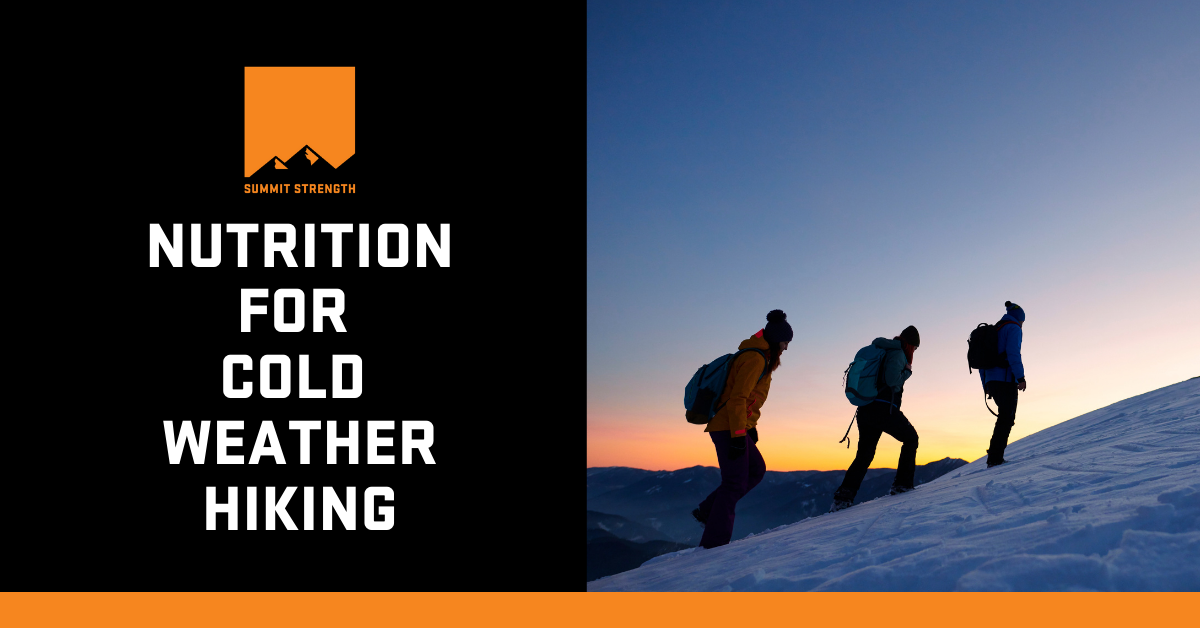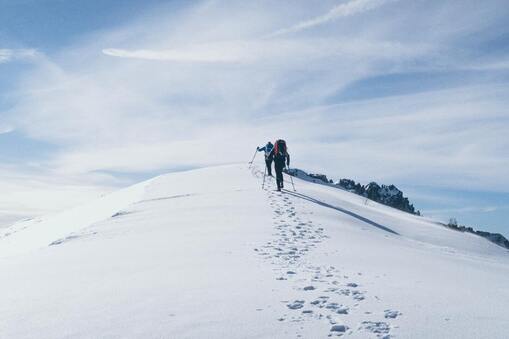|
Hiking and backpacking in the cold comes with it's own set of challenges. And your nutrition, and what you eat, can make a significant difference to your hiking performance, comfort and enjoyment on a colder hiker. What To Eat When Hiking In THe coldHiking in the cold of winter, in alpine environments and at higher elevations will present nutritional challenges, but nothing that a little knowledge and planning can’t overcome. When planning your nutrition for a cold-weather hike, here are some considerations you should keep top of mind: 1) Cold temperature can increase energy requirements This means you can burn more energy in colder climates during any type of activity. Shivering is involuntary muscle tensing that generates heat and offers a warming effect. Your muscles begin to shake in small movements, creating warmth by expending energy (burning your muscle glycogen – stored body fuel). When you first become slightly chilled, you will find yourself doing an isometric type of muscle tensing that can increase your metabolic rate two to four times. As you get further chilled, you’ll find yourself jumping around and hopping from foot to foot. This is Nature’s way to get you to generate heat and warm your body. If you become so cold that you start to shiver, these vigorous muscular contractions generate lots of heat— around 100 Calories can be burnt every 15 minutes. To maintain hiking performance (and reduce the risk of early fatigue and exhaustion), you must replace this energy burnt through the hike by eating enough before a during the hike. To help here, a good idea is to pack 1-2 extra high energy snacks per day (then you would pack on an average weather hike). And make sure you eat them! 2) Cold temperatures increase carbohydrate requirements It is well established that the amount of carbohydrates used by the body when exercising in cold environments increases. This can increase the likelihood of depleting this energy source, leading to early fatigue, exhaustion and brain fog. To combat this, it is important to remember to pack carbohydrate and energy-rich snacks to help fuel your hike. Carbohydrate-rich snacks can include:
3) Eating food can keep you warm Eating generates heat and helps warm your body. Food overall warming effect is known as thermogenesis (heat production). Thirty to sixty minutes after you eat, your body generates about ten per cent more heat than when you have an empty stomach. This increased metabolism comes primarily from the energy released during digestion. So, eating provides not only fuel but also increases heat production (warmth). The best way to warm yourself up is to consume warm carbohydrates during and after hiking. A few great ideas for this include:
The warm food, added to the thermogenic effect of eating, contributes to rapid re-warming. 4) Maintain your hydration The added complexity of hiking in colder climates means that cold temperatures (and altitude) inhibit the desire to drink. Another factor in the cold is many hikers will shun drinking to avoid taking bathroom breaks. Don’t be one of these hikers. There is a consequent performance deficit for every 1% loss in body weight (meaning you will get tired and fatigued on the trail quicker). 2hr prior to hiking : Drink 10ml/kg. Drink regularly throughout hiking where possible – up to 250ml every 15 - 30min. If you are in an alpine environment, you also need to ensure that your water doesn't freeze! So added precautions need to be taken here. How can we practically achieve the best performance given the above? As mentioned in the cold, shivering can greatly increase energy expenditure and carbohydrate breakdown. It may be appropriate in rest breaks to consume hot fluids from a thermos to keep core body temperature from dropping. Examples of hot fluids include:
Information and advice provided by our friends at Body Fusion Dietetics. If you need help devising a nutrition plan for cold climate hikes, contact them for professional advice. What you eat during a cold weather hiking can make a significant difference to your performance, comfort and ultimately your enjoyment on the trail. These tips make take a little bit of planning and a little bit of foresight, but put them into action, and they will serve you well on the trail.
|
AuthorRowan is a personal trainer who specialises in training for hiking, trekkers and mountaineers for their bucket list adventures. Archives
July 2024
Categories
All
|
AboutSummit Strength is a personal training for hiking service created specifically to help hikers have the best chance of a safe, enjoyable and successful adventure.
|
Company |
Services |
|
|
© COPYRIGHT 2018. ALL RIGHTS RESERVED.
|
Website Design by My Personal Trainer Website
|



 RSS Feed
RSS Feed
